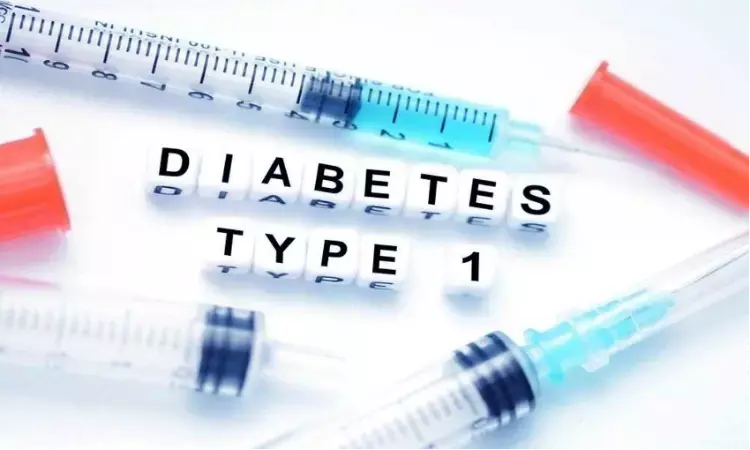- Home
- Medical news & Guidelines
- Anesthesiology
- Cardiology and CTVS
- Critical Care
- Dentistry
- Dermatology
- Diabetes and Endocrinology
- ENT
- Gastroenterology
- Medicine
- Nephrology
- Neurology
- Obstretics-Gynaecology
- Oncology
- Ophthalmology
- Orthopaedics
- Pediatrics-Neonatology
- Psychiatry
- Pulmonology
- Radiology
- Surgery
- Urology
- Laboratory Medicine
- Diet
- Nursing
- Paramedical
- Physiotherapy
- Health news
- Fact Check
- Bone Health Fact Check
- Brain Health Fact Check
- Cancer Related Fact Check
- Child Care Fact Check
- Dental and oral health fact check
- Diabetes and metabolic health fact check
- Diet and Nutrition Fact Check
- Eye and ENT Care Fact Check
- Fitness fact check
- Gut health fact check
- Heart health fact check
- Kidney health fact check
- Medical education fact check
- Men's health fact check
- Respiratory fact check
- Skin and hair care fact check
- Vaccine and Immunization fact check
- Women's health fact check
- AYUSH
- State News
- Andaman and Nicobar Islands
- Andhra Pradesh
- Arunachal Pradesh
- Assam
- Bihar
- Chandigarh
- Chattisgarh
- Dadra and Nagar Haveli
- Daman and Diu
- Delhi
- Goa
- Gujarat
- Haryana
- Himachal Pradesh
- Jammu & Kashmir
- Jharkhand
- Karnataka
- Kerala
- Ladakh
- Lakshadweep
- Madhya Pradesh
- Maharashtra
- Manipur
- Meghalaya
- Mizoram
- Nagaland
- Odisha
- Puducherry
- Punjab
- Rajasthan
- Sikkim
- Tamil Nadu
- Telangana
- Tripura
- Uttar Pradesh
- Uttrakhand
- West Bengal
- Medical Education
- Industry
GIP Infusion reduces Postprandial blood sugar fluctuations in Type 1 Diabetes: Study

A large number of epidemiological and pathophysiological studies have demonstrated that postprandial (PP) hyperglycemia contributes greatly to overall blood sugar control assessed by HbA1c, and increases the risk of micro- and macrovascular complications in diabetic patients. In patients with T1DM, achieving an optimal PP blood sugar control remains challenging, even if the growing use of continuous glucose monitoring (CGM) systems provides a detailed picture of daily blood sugar fluctuations, including those occurring in postprandial periods.
According to a recently published study in Cardiology ,GIP infusion seemed to attenuate postprandial plasma glucose excursions without significantly increasing the need of glucose to avoid episodes of extremely low blood sugar in patients with T1D.
During the past 30 years, the involvement of several gut-derived peptides in the regulation of pancreatic islet secretion has been progressively uncovered. One such gut-derived factor is glucose-dependent insulinotropic polypeptide (GIP), a polypeptide hormone secreted from the small-intestinal K cells in response to nutrient intake . GIP is well founded as an incretin hormone potentiating insulin release from β-cells in healthy humans . In addition to insulinotropic effects, early studies also delineated the glucagon-releasing properties of GIP by demonstrating that GIP stimulates glucagon secretion from α-cells in the perfused rat pancreas at glucose concentrations <5.5 mmol/L.
To date, Gluco-regulatory effects of the insulinotropic and glucagonotropic gut hormone glucose-dependent insulinotropic polypeptide (GIP) in type 1 diabetes (T1D) are unclear.
Researchers under BJØRN HOE ,from Hellerup, Denmark evaluated the effects of exogenous and endogenous GIP on plasma glucose excursions in a setting of prandial insulin over-dose and physical activity after meal ingestion.
The study design consisted of a randomized, placebo-controlled, double-blinded, crossover study, 12 men with T1D (age [mean±SD]: 26±6.6 years; BMI: 23±2.3 kg/m2; HbA1c: 6.5±2.7% (48.4±6.3 mmol/mol); diabetes duration: 11.3±5.5 years; plasma C-peptide <200 pmol/L) underwent three separate study days involving a liquid mixed meal test with 125% of regular prandial insulin dose, 30 minutes of intermediate bicycling (60 minutes after mixed-meal), and 270 minute infusions of GIP, the GIP receptor antagonist GIP(3-30)NH2 and placebo, respectively.
On data analysis, the following facts emrged.
- The GIP infusion attenuated postprandial plasma glucose excursions (Cmax-Cmin) by [mean±SEM] 1.5±0.5 mmol/L and 0.92±0.56 mmol/L compared to GIP(3-30)NH2 and placebo, respectively (P=0.03).
- Infused glucose needed to avoid plasma glucose <2.5 mmol/L was similar on all 3 study days (P=0.13).For full article click on the link :https://doi.org/10.2337/db20-89-LB
Primary source: Cardiology
Dr Satabdi Saha (BDS, MDS) is a practicing pediatric dentist with a keen interest in new medical researches and updates. She has completed her BDS from North Bengal Dental College ,Darjeeling. Then she went on to secure an ALL INDIA NEET PG rank and completed her MDS from the first dental college in the country – Dr R. Ahmed Dental College and Hospital. She is currently attached to The Marwari Relief Society Hospital as a consultant along with private practice of 2 years. She has published scientific papers in national and international journals. Her strong passion of sharing knowledge with the medical fraternity has motivated her to be a part of Medical Dialogues.
Dr Kamal Kant Kohli-MBBS, DTCD- a chest specialist with more than 30 years of practice and a flair for writing clinical articles, Dr Kamal Kant Kohli joined Medical Dialogues as a Chief Editor of Medical News. Besides writing articles, as an editor, he proofreads and verifies all the medical content published on Medical Dialogues including those coming from journals, studies,medical conferences,guidelines etc. Email: drkohli@medicaldialogues.in. Contact no. 011-43720751


